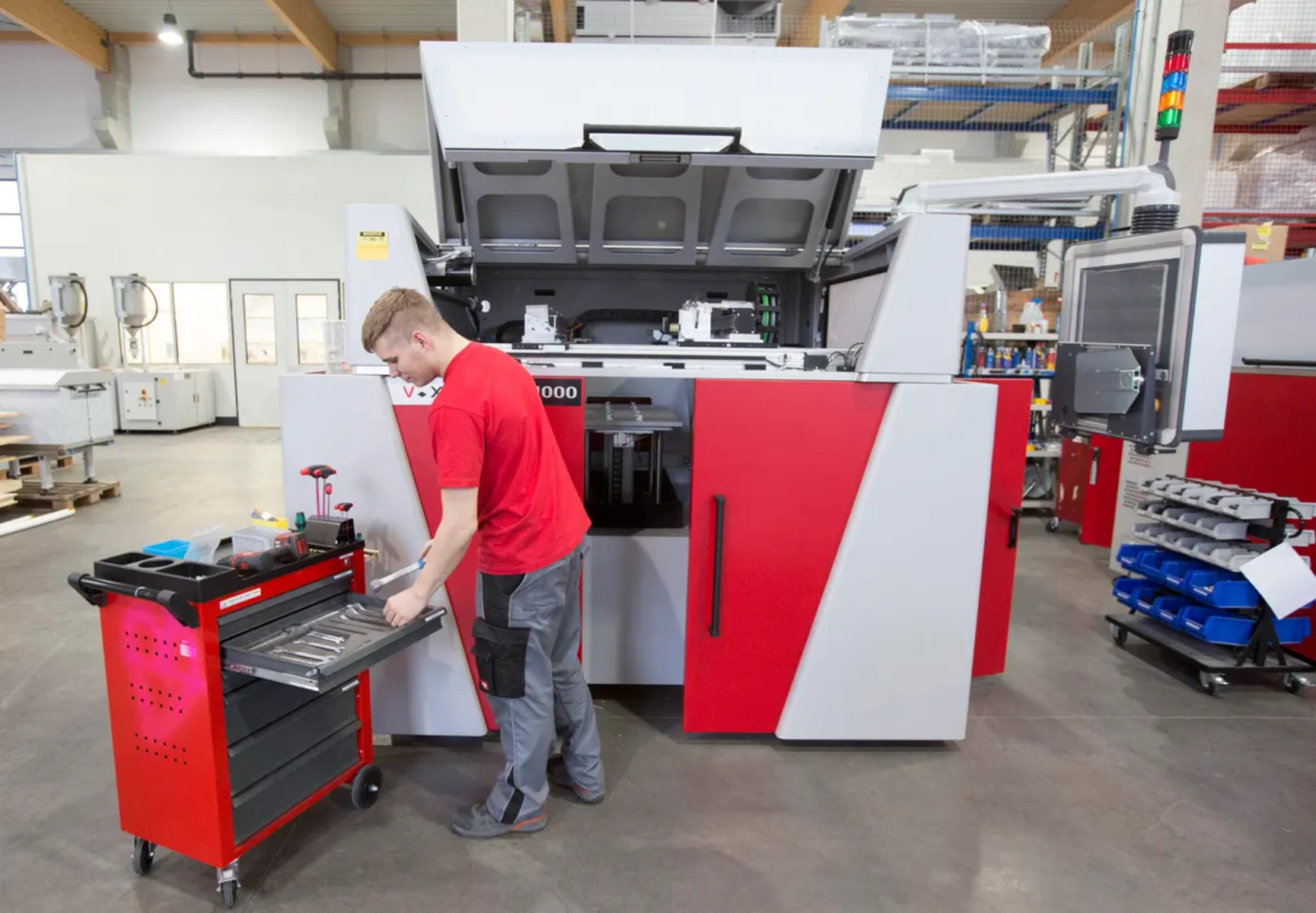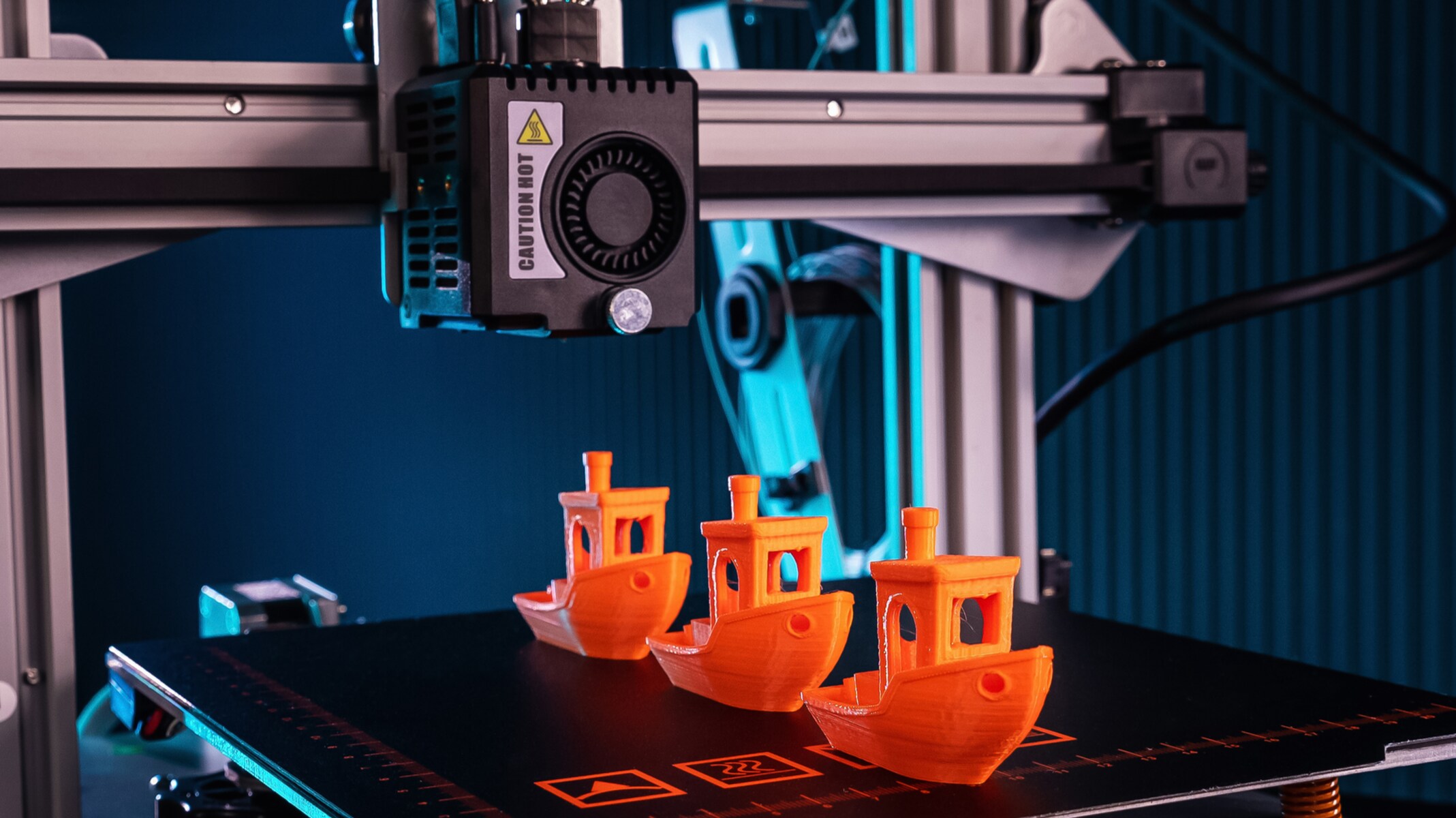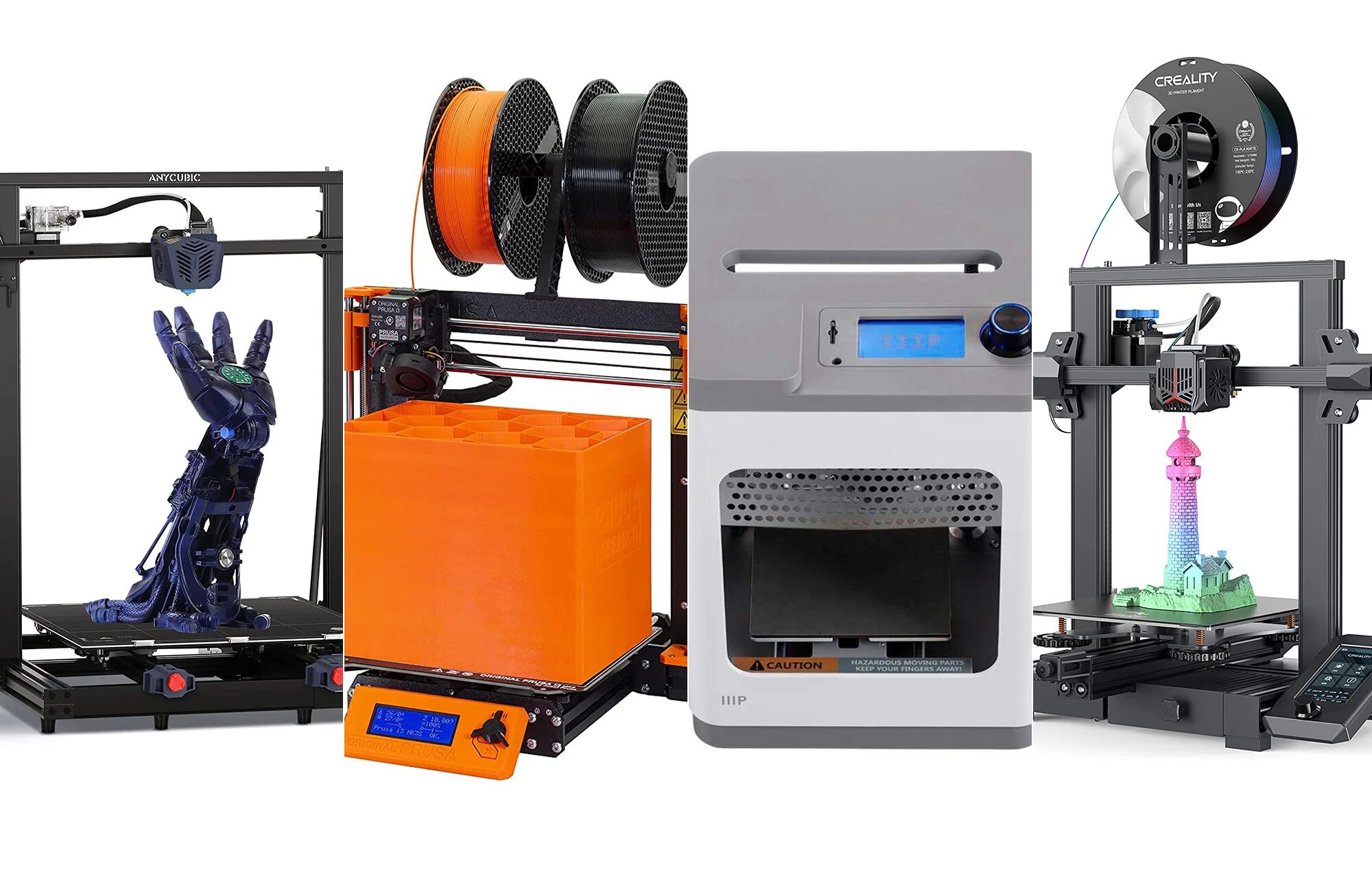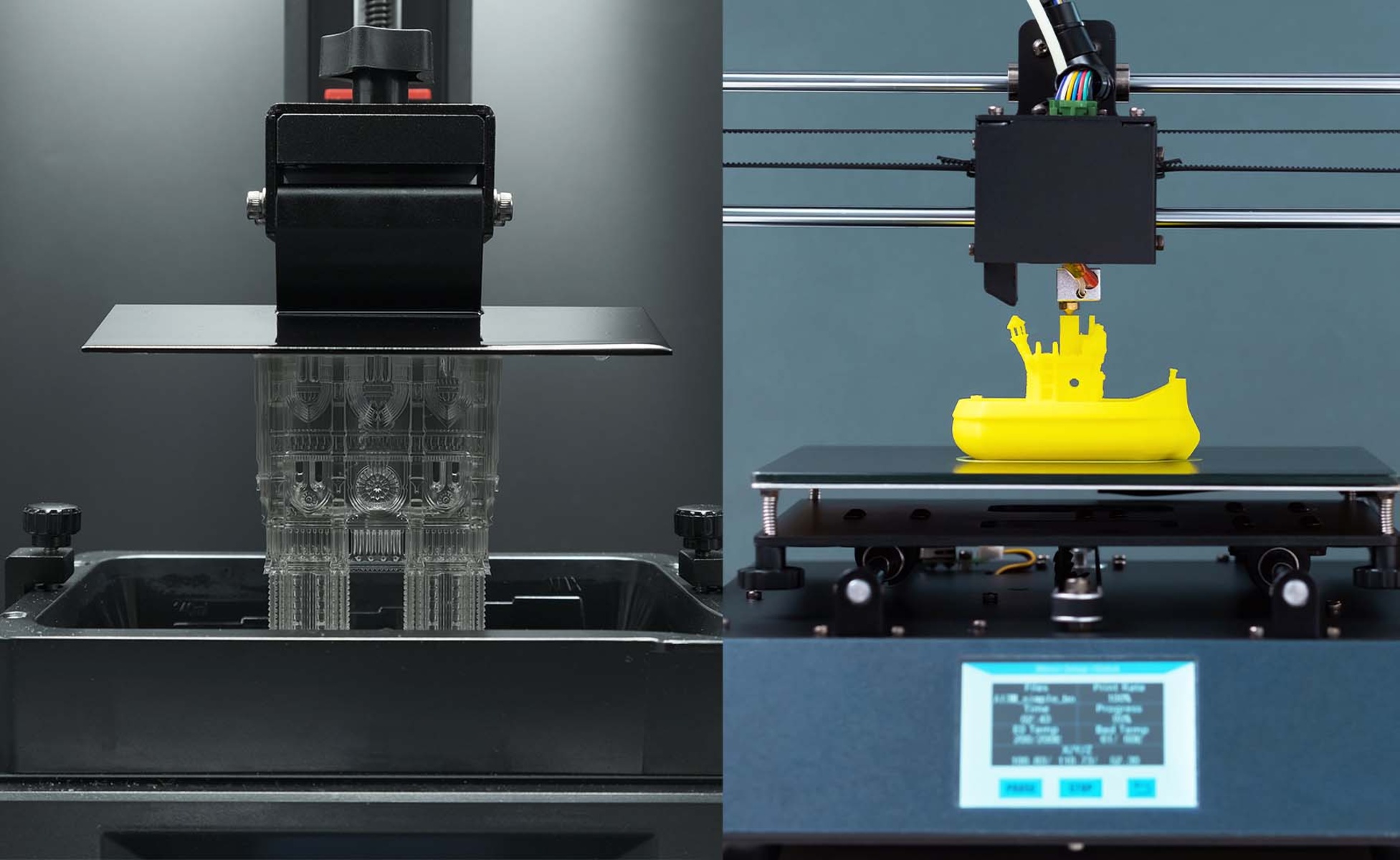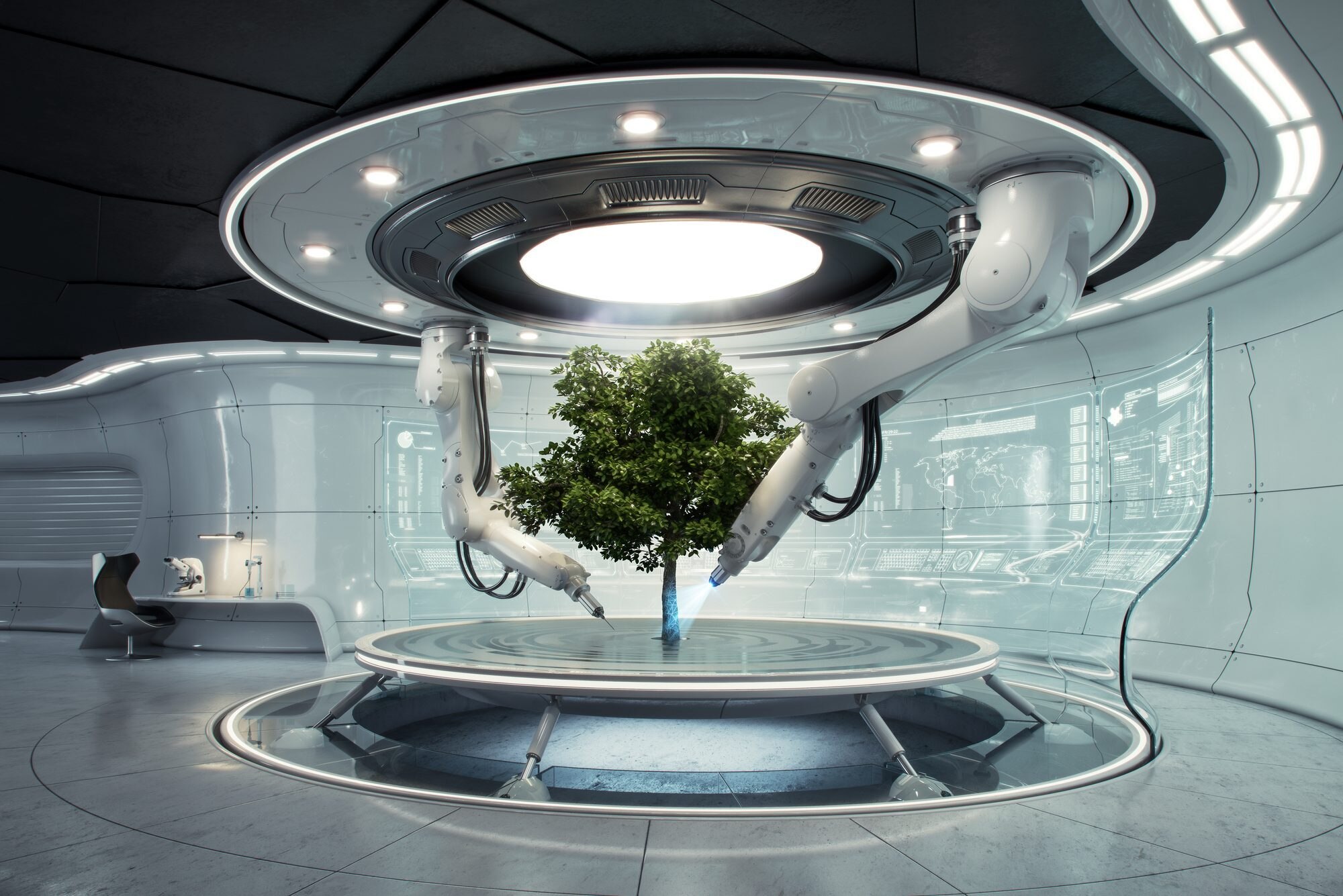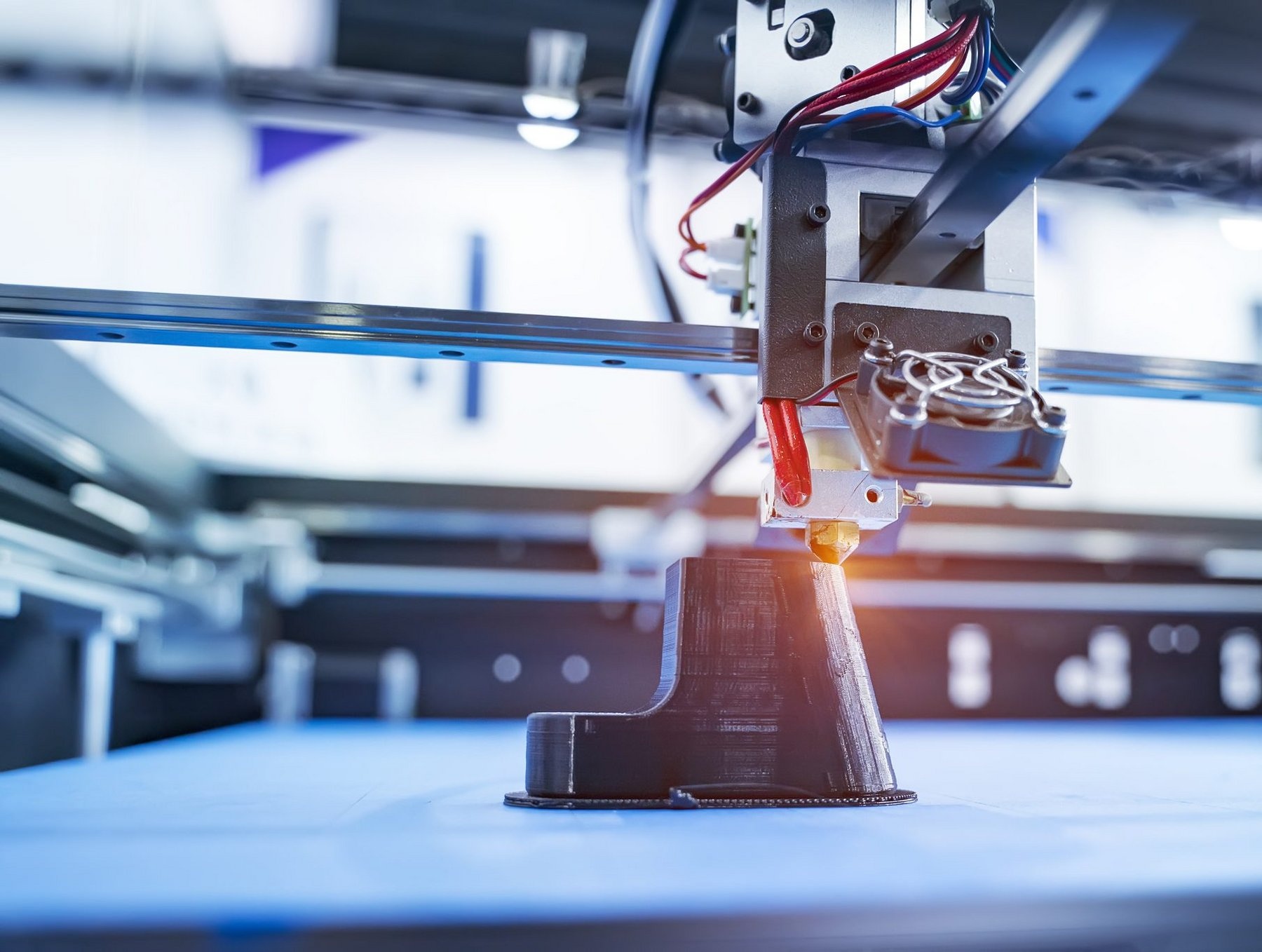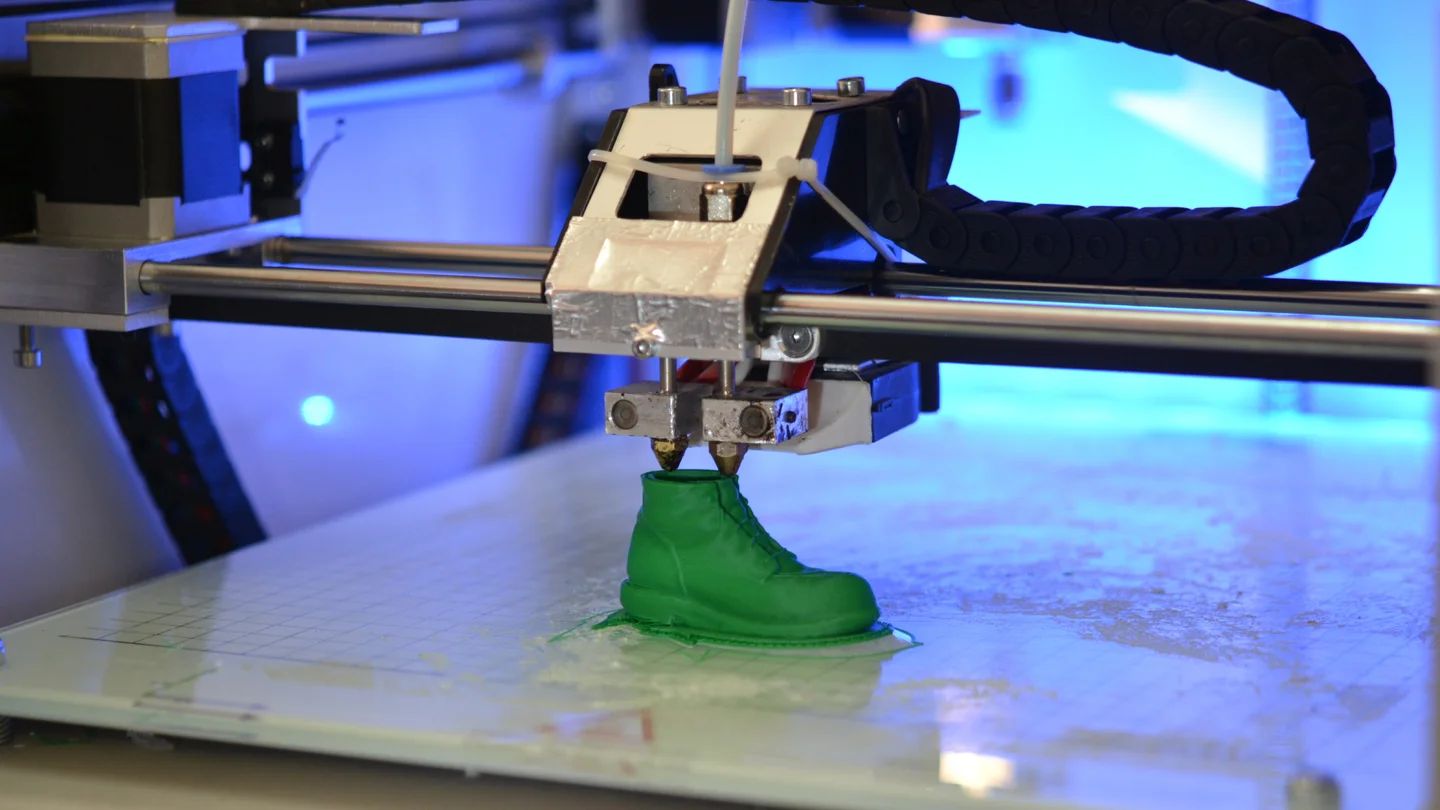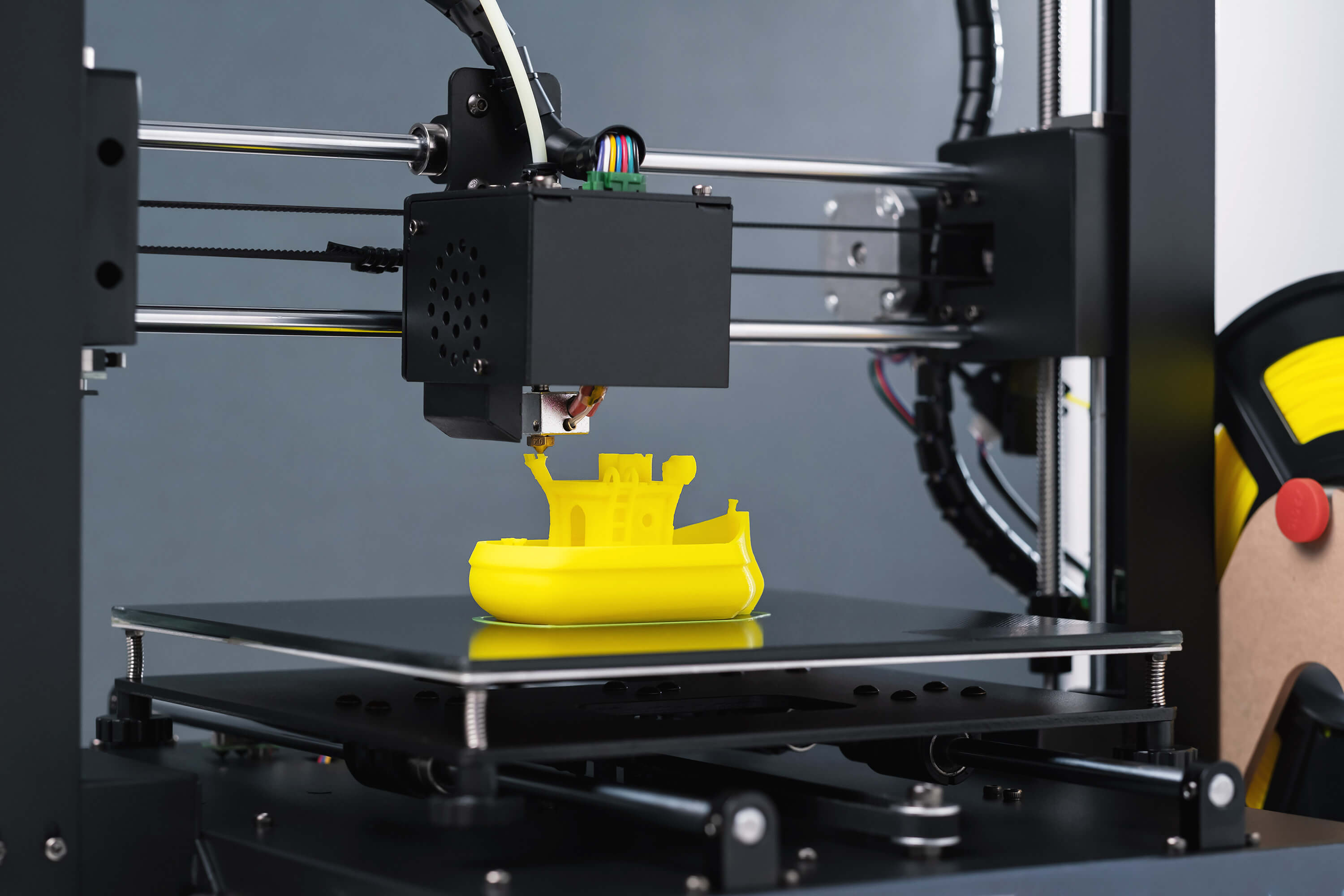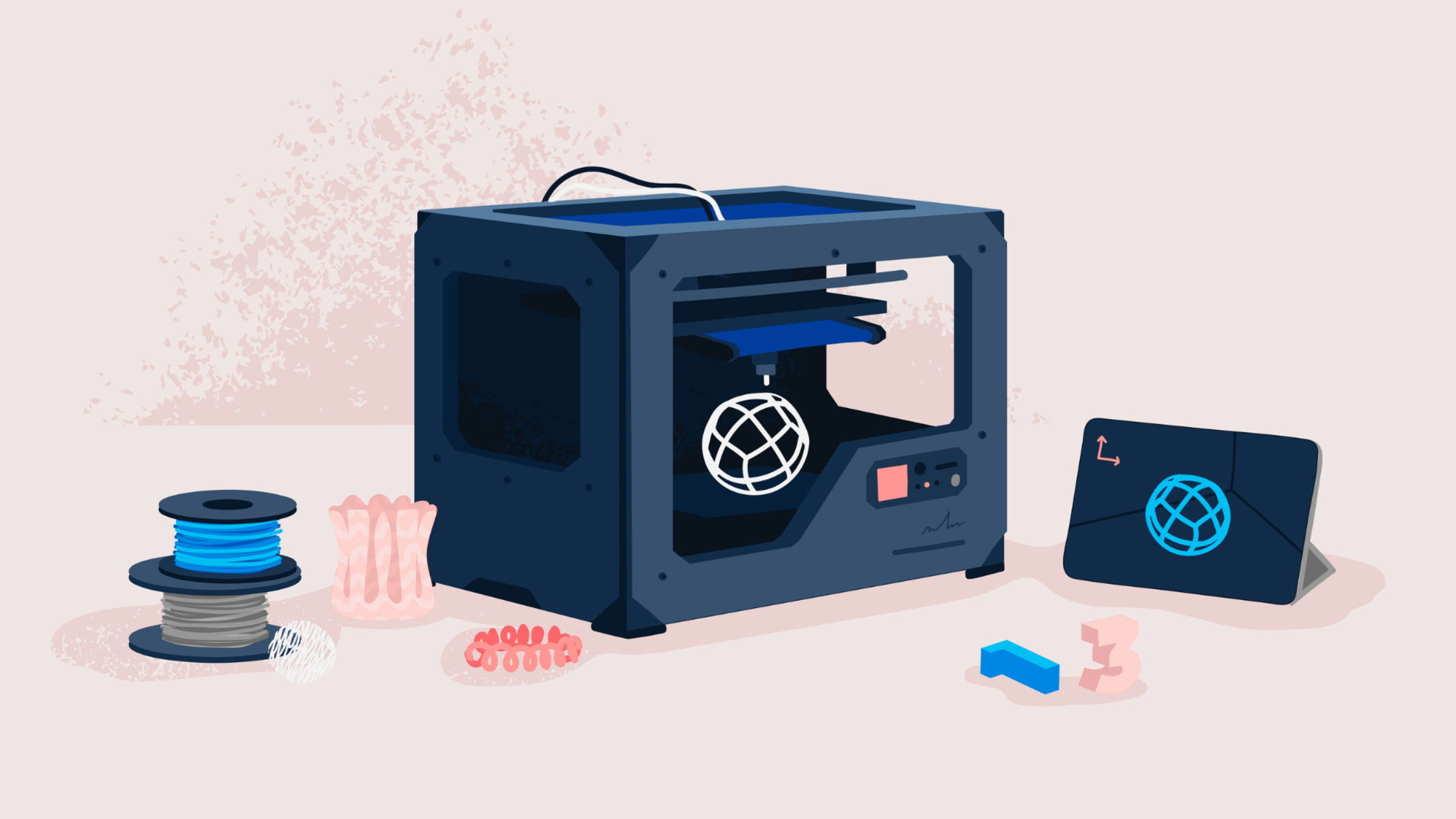Introduction
Over the past decade, 3D printing has emerged as a game-changing technology with the potential to revolutionize various industries. Also known as additive manufacturing, 3D printing allows objects to be created by layering materials based on digital designs. The ability to turn digital models into physical objects has opened up new possibilities in manufacturing, design, and innovation.
With its versatility and flexibility, 3D printing is making a significant impact across different sectors. It offers businesses and individuals the ability to produce customized products with precision, speed, and cost-effectiveness. This technology is not only transforming traditional manufacturing processes but also enabling breakthroughs in fields like healthcare, automotive, aerospace, architecture, fashion, food, education, and art.
In this article, we will explore how 3D printing is revolutionizing various industries, bringing about a wave of innovation and reshaping the way we think about production and design.
Healthcare Industry
The healthcare industry has been one of the early adopters of 3D printing technology, revolutionizing patient care and treatment. 3D printers are being used to create personalized medical devices, prosthetics, and anatomical models for surgical planning.
One of the significant advancements in the healthcare industry is the production of patient-specific implants and prosthetics. With 3D printing, doctors can create custom-made implants that match the exact specifications of individual patients. This ensures a better fit and improves overall treatment outcomes. In addition, prosthetics can be designed and produced quickly, enabling amputees to regain mobility and live more comfortable lives.
Furthermore, 3D printing is shaping the field of surgical planning. Complex surgeries can now be meticulously planned with the help of 3D-printed anatomical models. These models offer surgeons a tangible representation of a patient’s specific anatomy, allowing them to practice surgical techniques and navigate their way through intricate procedures more effectively. This ultimately leads to reduced operating time, minimized risks, and improved patient safety.
Moreover, research and development in the healthcare industry are being accelerated by 3D printing. The technology facilitates the production of prototypes and small-scale medical devices, enabling researchers to test new concepts and treatments more efficiently. 3D printing has also played a crucial role in the manufacturing of bioprinted tissues and organs, which could potentially address the global organ shortage crisis in the future.
With its ability to create personalized medical solutions, enhance surgical planning, and facilitate research and development, 3D printing is revolutionizing healthcare, improving patient care, and advancing medical innovation.
Automotive Industry
The automotive industry is experiencing a transformational shift with the integration of 3D printing technology. From prototyping to production, 3D printing is revolutionizing the way vehicles are designed and manufactured.
One of the significant advantages of 3D printing in the automotive industry is the ability to produce complex and lightweight parts. Traditional manufacturing methods often involve multiple components and complex assembly processes. With 3D printing, automotive engineers can create intricate designs with fewer parts, reducing weight and improving fuel efficiency. This not only enhances the performance of vehicles but also reduces costs associated with materials and assembly.
Furthermore, 3D printing allows for rapid prototyping, significantly speeding up the product development cycle. Automotive manufacturers can quickly produce physical models of vehicle components and test their fit, function, and aesthetics. This iterative design process enables faster iterations, leading to more efficient designs and shorter time-to-market for new vehicles.
Another area where 3D printing is making an impact is in the customization of automotive parts. Manufacturers can now produce personalized components tailored to individual customer preferences. Whether it’s a unique interior trim or a custom-designed exterior panel, 3D printing enables automotive companies to offer more personalized options to their customers, enhancing the overall appeal and value of their vehicles.
Moreover, 3D printing is also being used for the production of spare parts. Instead of the traditional approach of maintaining a large inventory of spare parts, manufacturers can now 3D print the required components on-demand. This reduces warehousing costs, improves the availability of spare parts, and prolongs the lifespan of older vehicles that may no longer be in production.
With its ability to create complex parts, accelerate prototyping, enable customization, and streamline spare parts production, 3D printing is revolutionizing the automotive industry, driving innovation, and reshaping the way vehicles are designed and manufactured.
Aerospace Industry
The aerospace industry is at the forefront of exploring and leveraging the benefits of 3D printing technology. With its ability to produce lightweight, complex, and high-performance components, 3D printing is transforming the way aircraft and spacecraft are built.
One of the significant advantages of 3D printing in the aerospace industry is the reduction in weight. Traditional manufacturing methods involve multiple parts and complex assembly processes, adding weight and compromising fuel efficiency. With 3D printing, aerospace engineers can design and produce lightweight components that maintain structural integrity while minimizing weight. This not only improves fuel efficiency but also increases payload capacity, enabling the development of more advanced and efficient aircraft and spacecraft.
Furthermore, 3D printing allows for the creation of complex geometries that were previously impossible or challenging to manufacture. With traditional manufacturing, intricate structures would require multiple assembly steps or the use of costly and time-consuming machining processes. 3D printing, on the other hand, can produce these complex geometries in a single fabrication step, reducing production time and costs while increasing design possibilities.
In addition, 3D printing enables the rapid prototyping of aerospace components. Engineers can quickly produce physical models and functional prototypes for testing and validation. This iterative design process allows for faster iterations and refinement of designs, leading to more efficient and optimized aerospace systems.
Another area where 3D printing is making an impact in the aerospace industry is in the production of low-volume or specialized components. Instead of relying on expensive tooling and long lead times for traditional manufacturing, 3D printing enables quick production of these components on-demand. This improves supply chain flexibility, reduces costs, and allows for faster response to changes or customization requirements.
With its ability to reduce weight, create complex geometries, enable rapid prototyping, and facilitate production of low-volume or specialized components, 3D printing is revolutionizing the aerospace industry, driving innovation, and shaping the future of aviation and space exploration.
Architecture and Construction Industry
The architecture and construction industry is experiencing a significant paradigm shift with the integration of 3D printing technology. 3D printing, also known as additive construction, is revolutionizing the way buildings and structures are designed and constructed, offering new possibilities and advantages in terms of efficiency, customization, and sustainability.
One of the major advantages of 3D printing in the architecture and construction industry is increased efficiency. Traditional construction methods often involve time-consuming and labor-intensive processes such as formwork, pouring, and curing. With 3D printing, buildings can now be constructed using layer-by-layer deposition of materials, significantly reducing the time and labor required. This allows for faster completion of projects, improved project management, and reduced overall costs.
Additionally, 3D printing enables greater design freedom and customization. Complex architectural structures that were once considered difficult or costly to build can now be realized with the help of 3D printing. This technology allows for the creation of intricate and unique designs, facilitating the realization of innovative and visually stunning buildings. Architects can explore new concepts and push the boundaries of traditional construction methods.
Moreover, 3D printing in construction also brings sustainability benefits. Traditional construction methods often generate significant waste from the cutting and shaping of materials. With 3D printing, materials can be precisely deposited according to the design, eliminating waste and reducing the environmental impact. Additionally, 3D printing allows for the use of more sustainable and recycled materials, further contributing to sustainable construction practices.
Furthermore, 3D printing plays a vital role in disaster relief and emergency housing. The technology enables the rapid production of temporary or permanent shelters in areas affected by natural disasters or humanitarian crises. This provides quick and efficient housing solutions, offering shelter and stability to those in need.
With its potential for increased efficiency, design freedom, sustainability, and impact in disaster relief, 3D printing is revolutionizing the architecture and construction industry, redefining the way buildings are designed, constructed, and utilized.
Fashion and Retail Industry
The fashion and retail industry is undergoing a remarkable transformation with the integration of 3D printing technology. Also known as fashiontech or digital fabrication, 3D printing is revolutionizing the way garments, accessories, and even footwear are designed, produced, and customized.
One of the significant advantages of 3D printing in the fashion industry is the ability to create complex and intricate designs that would be challenging to achieve with traditional manufacturing methods. The technology allows designers to bring their visionary concepts to life by translating them into tangible, three-dimensional objects. This level of design freedom opens up new possibilities for innovative and avant-garde fashion creations.
Furthermore, 3D printing facilitates customization and personalization. Clothing and accessories can be tailored to individual customer preferences, offering a unique and personalized consumer experience. With 3D scanning technology, designers and retailers can capture accurate measurements and create custom-fit garments for customers. This not only enhances customer satisfaction but also reduces waste from ill-fitting garments produced through mass production.
Additionally, 3D printing enables on-demand manufacturing, which has the potential to transform the traditional supply chain model in the fashion industry. Instead of producing large quantities of garments and managing inventory, retailers can use 3D printers to produce items as they are ordered. This reduces overproduction, minimizes waste, and optimizes inventory management, leading to a more sustainable and cost-effective production process.
Moreover, 3D printing has paved the way for the exploration of new materials and sustainability in fashion. With advancements in biodegradable and recycled materials, designers can create environmentally friendly and sustainable fashion pieces. This addresses the growing demand for eco-conscious fashion and promotes a more responsible approach to the production and consumption of garments.
In summary, 3D printing is disrupting the fashion and retail industry by revolutionizing design capabilities, enabling customization and on-demand manufacturing, and promoting sustainability. As this technology continues to evolve, it has the potential to reshape the way fashion is created, consumed, and experienced.
Food Industry
The food industry is transforming with the integration of 3D printing technology, offering new possibilities in food design, customization, and production. 3D food printers are revolutionizing the way we create and experience food, providing innovative solutions in areas such as culinary art, personalized nutrition, and sustainable food production.
One of the significant applications of 3D printing in the food industry is culinary art and food design. Chefs and food enthusiasts can use 3D printers to create intricate and visually stunning dishes with precision and detail. With the ability to layer and shape ingredients, 3D food printers provide a new canvas for culinary creativity, allowing chefs to present dishes in unique and innovative ways.
Furthermore, 3D printing enables customization in the food industry. Personalized nutrition is gaining traction, and 3D printers allow for the creation of food products tailored to individual dietary needs and preferences. With the ability to control ingredient composition and portion sizes, 3D-printed food can be designed to provide specific nutrients or accommodate dietary restrictions. This opens up new possibilities for personalized diets and expands access to specialized nutrition.
Additionally, 3D printing can contribute to sustainable food production. The technology allows for the creation of alternative food sources, such as cultured meat or insect-based products, with reduced environmental impact. With 3D printers, these alternative food sources can be transformed into palatable and visually appealing food items, making sustainable and ethical food choices more accessible and appetizing.
Moreover, 3D printing is also being explored for food customization in areas such as patient nutrition and elderly care. 3D-printed food can be designed to meet specific dietary requirements or address swallowing difficulties, providing improved nutrition and enhanced dining experiences for individuals with specific needs.
In summary, 3D printing is revolutionizing the food industry by enabling culinary art, customization, and sustainable food production. As this technology continues to advance, it has the potential to reshape the way we create, consume, and experience food, offering new culinary experiences and addressing various nutritional and sustainability challenges.
Education Industry
The education industry is experiencing a significant transformation with the integration of 3D printing technology. 3D printers are revolutionizing the way students learn and engage with complex concepts, offering hands-on experiences and fostering creativity and innovation in various fields of study.
One of the significant benefits of 3D printing in education is its ability to bring abstract concepts to life. Students can now visualize and interact with three-dimensional models of complex objects, structures, and scientific phenomena. This hands-on experience enhances understanding and retention of information, making learning more engaging and effective.
Furthermore, 3D printing plays a crucial role in STEAM education, which focuses on science, technology, engineering, arts, and mathematics. By using 3D printers, students can explore and apply concepts from multiple disciplines, combining creativity with technical skills. They can design and create their own prototypes, conduct experiments, and solve real-world problems, fostering critical thinking, problem-solving abilities, and innovation.
Moreover, 3D printing promotes a culture of collaboration and teamwork. Students can work together to design and build 3D models, sharing ideas, problem-solving, and collaborating on projects. This collaborative aspect of 3D printing encourages communication, fosters teamwork, and prepares students for future professional settings where collaboration and interdisciplinary skills are essential.
Additionally, 3D printing enhances accessibility and inclusivity in education. It allows for the creation of customized learning aids and assistive devices for students with special needs. With 3D printers, educators can produce tactile models, Braille materials, and other sensory learning tools, enabling equal access to education for all students.
Furthermore, 3D printing serves as a bridge between the virtual and physical worlds. It enables students to transform their digital creations into tangible objects, providing a tangible connection to their work. This connection between the digital and physical realms promotes a deeper understanding of design principles, encourages creativity, and supports the development of technical skills.
In summary, 3D printing is revolutionizing the education industry by providing hands-on learning experiences, promoting interdisciplinary collaboration, enhancing accessibility, and bridging the gap between the virtual and physical worlds. As this technology continues to advance, it has the potential to reshape education and empower students with the skills and creativity needed to thrive in the future.
Art and Design Industry
The art and design industry is undergoing a significant transformation with the integration of 3D printing technology. 3D printers are revolutionizing the way artists and designers create, innovate, and bring their visions to life in a tangible and three-dimensional form.
One of the significant advantages of 3D printing in the art and design industry is the ability to create intricate and complex designs that would be challenging or impossible with traditional manufacturing methods. Artists and designers can now bring their imagination to reality by using 3D printers to produce sculptures, jewelry, architectural models, and other artistic creations with precision and detail.
Furthermore, 3D printing allows for experimentation and exploration of new materials and techniques. Artists and designers can push the boundaries of traditional artistic mediums by incorporating 3D-printed elements into their work. This fusion of traditional and digital art forms opens up new possibilities for artistic expression, facilitating the creation of unique and innovative artworks that captivate and engage viewers.
Moreover, 3D printing enables customization and personalization in the art and design industry. Artists and designers can create customized pieces tailored to specific client needs or preferences. This level of customization enhances the value and uniqueness of artworks, enabling artists to provide personalized experiences for their clients.
Additionally, 3D printing supports sustainability in the art and design industry. With its ability to use recycled or biodegradable materials, 3D printing promotes environmental consciousness in the creation of art and design. This sustainable approach allows artists and designers to produce eco-friendly artworks and contribute to a more responsible and sustainable creative industry.
Furthermore, 3D printing inspires collaboration and interdisciplinary exploration. Artists and designers can collaborate with engineers, architects, and technologists to create innovative and interactive installations or wearable art. This cross-pollination of ideas and expertise fosters a creative synergy that pushes the boundaries of artistic expression and challenges traditional notions of art and design.
In summary, 3D printing is revolutionizing the art and design industry by enabling the creation of intricate designs, fostering customization and personalization, promoting sustainability, and inspiring collaboration and interdisciplinary exploration. As this technology continues to advance, it has the potential to reshape the art and design landscape, inspiring artists and designers to push the boundaries of creativity and innovation.
Conclusion
As we have explored throughout this article, 3D printing is revolutionizing various industries and transforming the way we approach manufacturing, design, and innovation. From healthcare and automotive to aerospace, architecture, fashion, food, education, and art, the applications of 3D printing are vast and diverse.
In the healthcare industry, 3D printing is enabling personalized medical solutions, enhancing surgical planning, and advancing research and development. In the automotive industry, it is revolutionizing vehicle design, production, and customization, leading to lighter and more efficient cars. The aerospace industry is leveraging 3D printing to create complex and lightweight components, facilitating innovative aircraft and spacecraft designs. In architecture and construction, 3D printing is streamlining the building process, enhancing design possibilities, and promoting sustainability.
3D printing is also making a significant impact in the fashion and retail industry by enabling intricate designs, customization, and sustainable production. In the food industry, it is revolutionizing culinary art, personalized nutrition, and sustainable food production. Moreover, 3D printing is transforming education by providing hands-on learning experiences, fostering collaboration, and promoting accessibility.
In the art and design industry, 3D printing is empowering artists and designers to create intricate and innovative artworks, pushing the boundaries of artistic expression. It is evident that 3D printing is driving innovation, promoting sustainability, and reshaping industries across the board.
As 3D printing technology continues to evolve and become more accessible, its impact on industries will continue to expand. The future holds even more possibilities for this transformative technology, as advancements are made in materials, speed, and capabilities. The integration of 3D printing in various sectors will continue to spark innovation, enhance efficiency, customization, and sustainability, ultimately shaping the way we live, work, and interact with the world around us.







